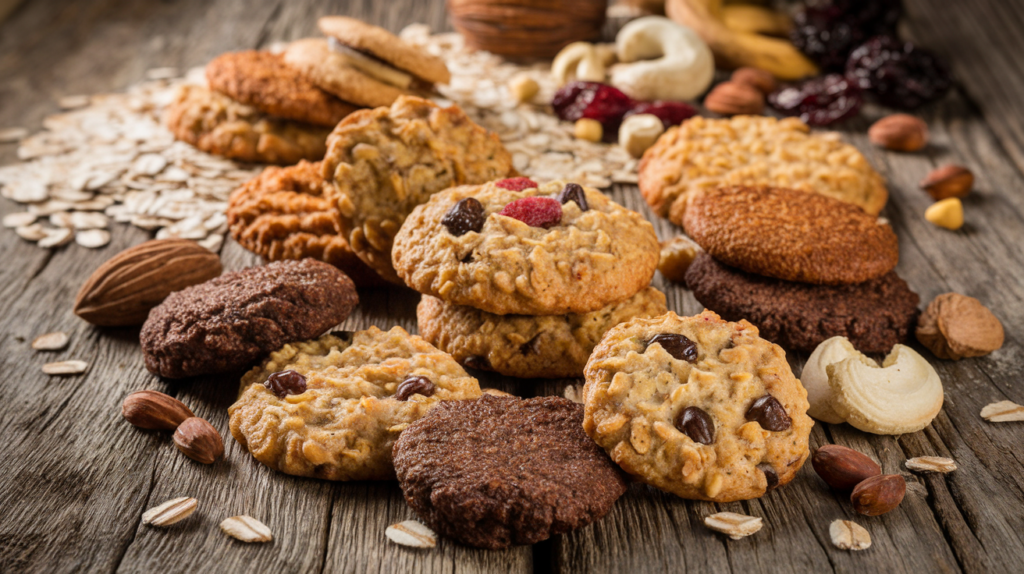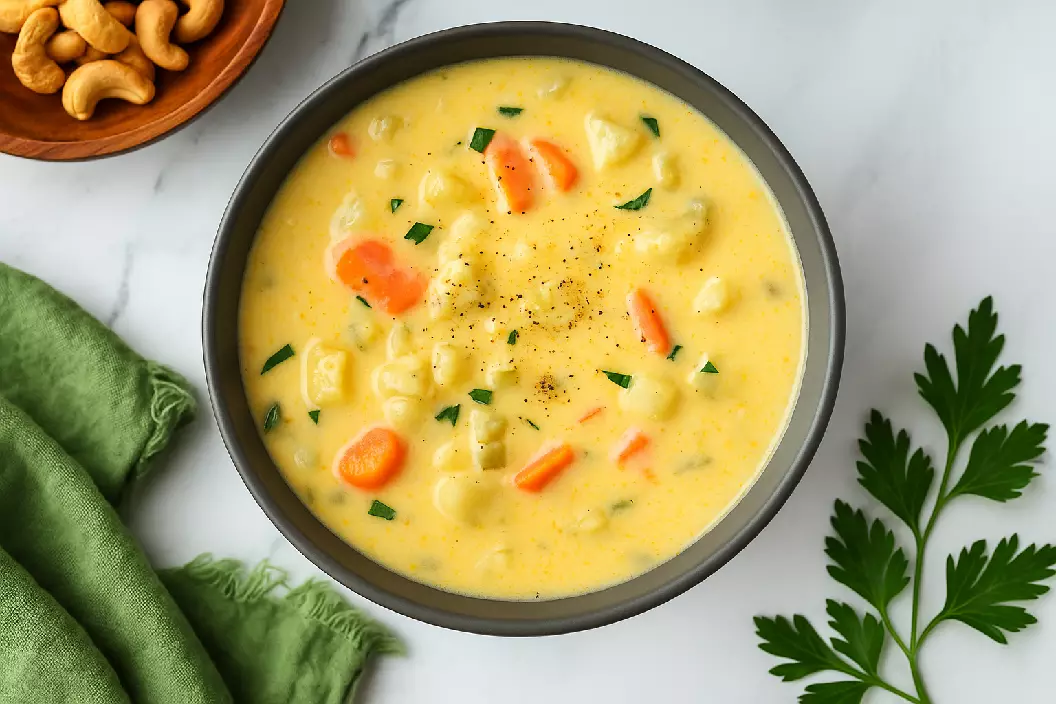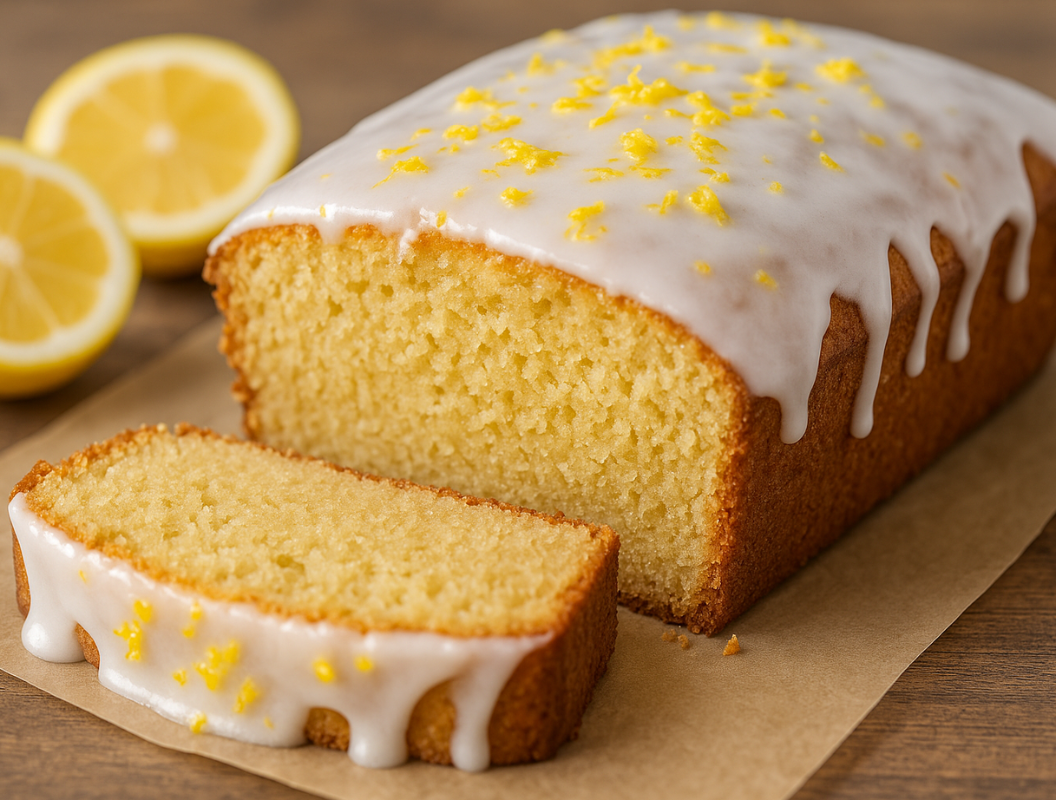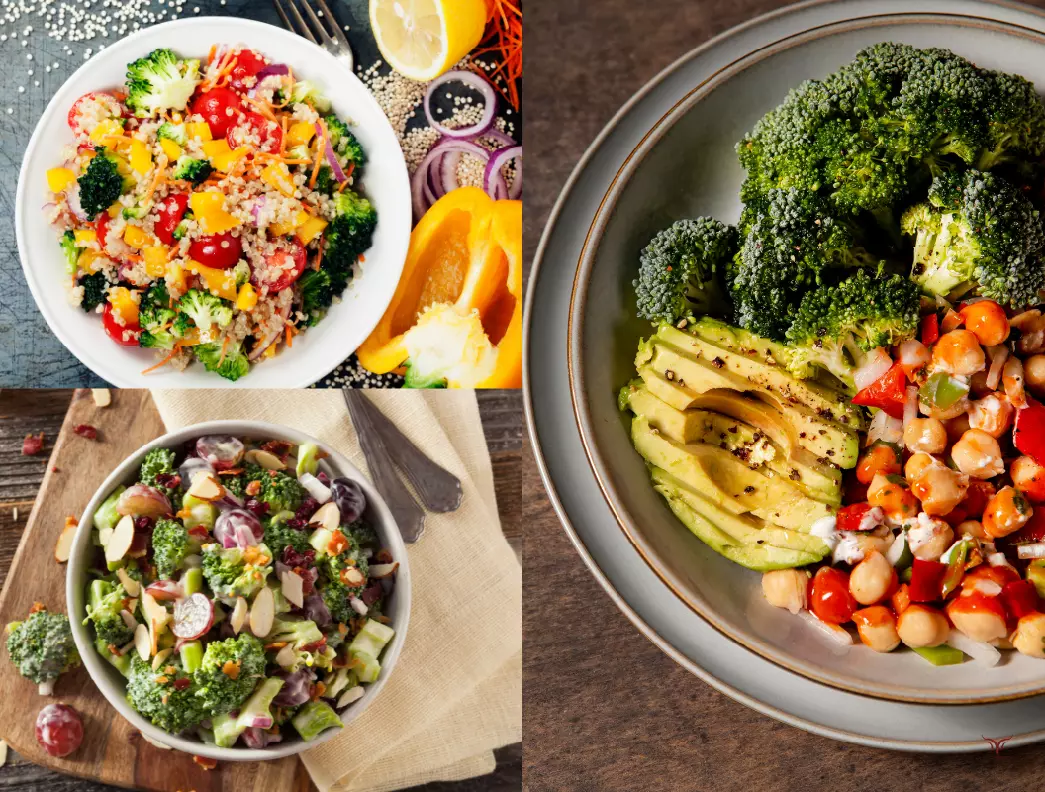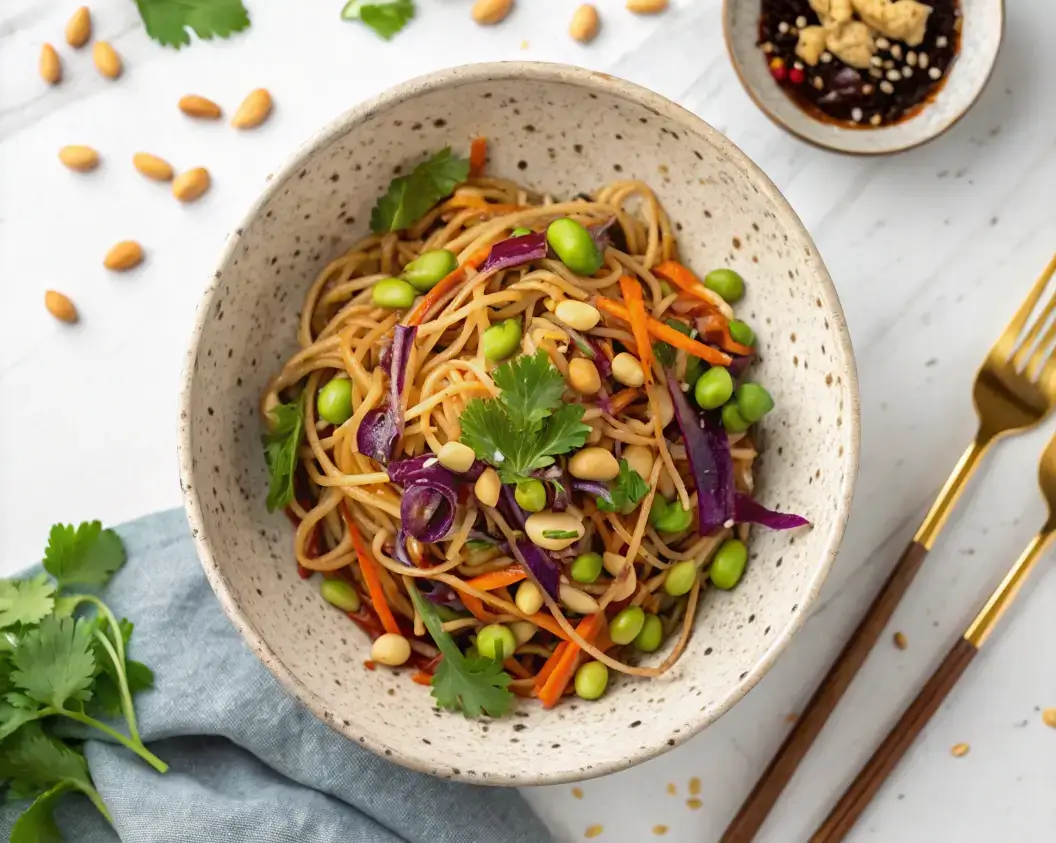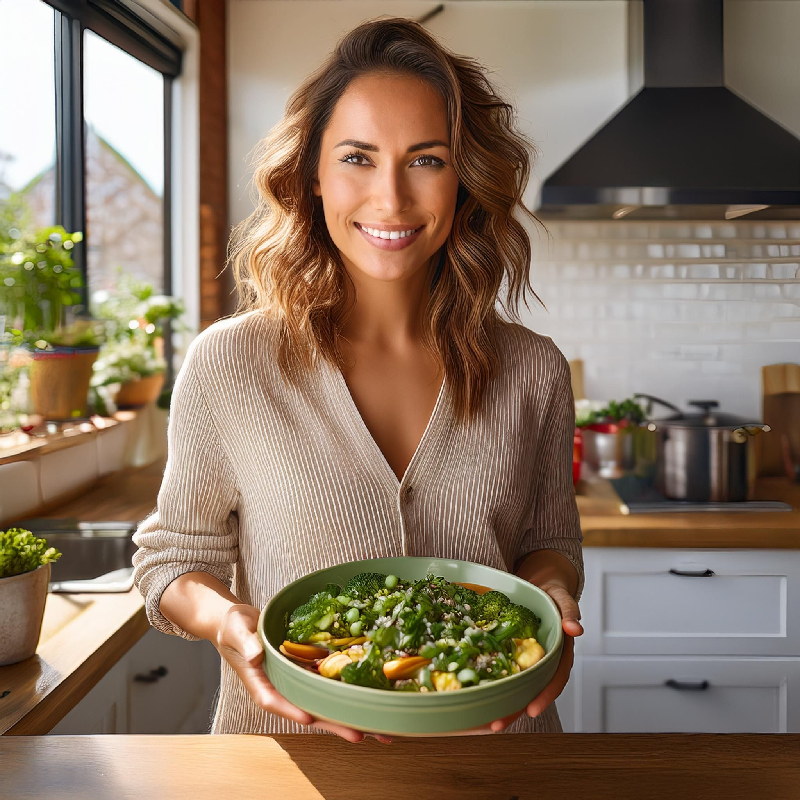Whether you’re a plant-based baking pro or just beginning your journey, crafting delicious oatmeal cookies will be an enjoyable and satisfying adventure! Vegan baking has surged in popularity thanks to its health benefits, environmental advantages, and the delicious possibilities it offers. Among the myriad of vegan treats, oatmeal cookies hold a special place for their hearty texture, wholesome ingredients, and comforting flavors. This comprehensive guide unveils the 7 Secrets to Delicious Vegan Oatmeal Cookies that will elevate your baking game and satisfy your sweet tooth.
Introduction
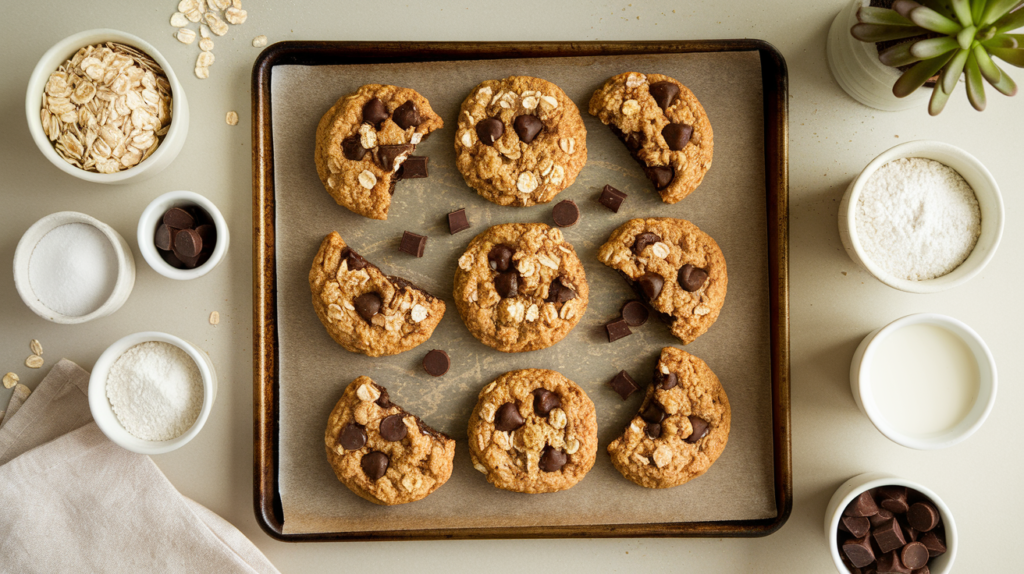
Vegan baking isn’t just a trend but a lifestyle choice emphasizing compassion, sustainability, and health. By eliminating animal products, vegan recipes often become more inclusive, catering to various dietary restrictions while delivering on taste and texture. With their natural sweetness and chewy consistency, oatmeal cookies have become a staple in the vegan baking repertoire. They are highly regarded for their adaptability and the ease with which customization can be implemented.
Imagine biting into a soft, chewy cookie infused with warm spices and packed with wholesome ingredients like oats, nuts, and dried fruits. Vegan oatmeal cookies satisfy your craving for something sweet and provide a nourishing snack that supports a healthy lifestyle. Whether you’re baking for yourself, your family, or your community, mastering the art of vegan oatmeal cookies can bring joy and satisfaction to your kitchen.
Choosing the Best Oats for Vegan Oatmeal Cookies
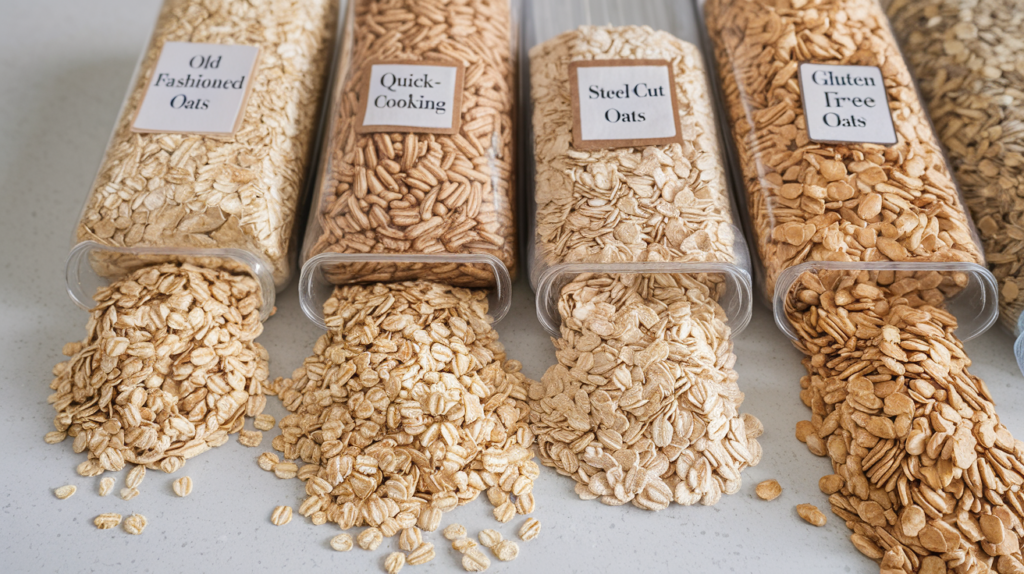
Top Oats for Baking Perfect Vegan Oatmeal Cookies
Unsurprisingly, oats are the key ingredient for any great oatmeal cookie. However, not all oats perform equally well in baking. The type of oats you choose can significantly impact your cookies’ texture and overall quality.
- Old-Fashioned Rolled Oats: These are the most commonly used oats for baking. Their flat, flaky structure absorbs moisture well, making chewy and hearty cookies. They maintain their shape during baking, providing a satisfying bite.
- Quick-Cooking Oats: These oats have a finer consistency and cook more quickly than rolled oats. Although suitable for cookies, they can lead to a softer texture, which may be better for those who prefer firmer cookies.
- Steel-cut oats consist of entire groats cut into smaller segments for more convenient application. They impart a uniquely chewy consistency and a rich, nutty taste. However, they necessitate extended soaking or baking durations to achieve proper softness
- Gluten-Free Oats: Certified gluten-free oats are a fantastic alternative for those with gluten sensitivities. They ensure your cookies are safe for consumption without compromising texture or taste.
How Oats Affect the Texture of Vegan Oatmeal Cookies
The variety of oats you choose significantly influences the texture of your cookies. Old-fashioned rolled oats provide a chewy and robust texture while quick-cooking oats yield softer cookies. On the other hand, steel-cut oats offer a substantial chewiness and a unique mouthfeel that can make your cookies stand out.
Ensure that the oats are certified gluten-free for gluten-free options to avoid cross-contamination. These oats behave similarly to rolled oats in recipes, providing the necessary structure and chewiness without the gluten that can affect texture and elasticity.
Essential Vegan Substitutes for Vegan Oatmeal Cookies
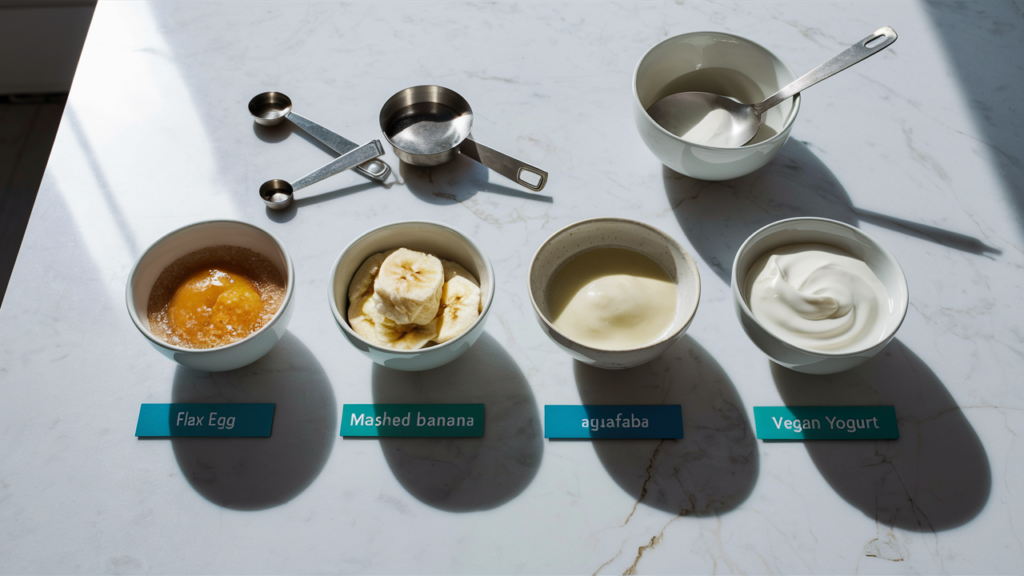
Binding Ingredients for Vegan Oatmeal Cookies: Flax Eggs vs. Banana
In traditional baking, eggs bind ingredients together and provide structure. However, several alternatives can effectively replace eggs in vegan baking without sacrificing texture or taste.
- Flax Eggs: A flax egg mixes ground flaxseeds with water. Typically, one tablespoon of ground flaxseeds mixed with three tablespoons of water creates one flax egg. This mixture gels similarly to egg whites, providing excellent binding properties. Flax eggs add a subtle nutty flavor and are rich in omega-3 fatty acids, enhancing the nutritional profile of your cookies.
- Banana: Mashed bananas can also serve as a binding agent. They contribute natural sweetness and moisture to the cookies, leading to a softer and moderately denser texture. One medium banana can replace one egg, making it an excellent choice for recipes where a hint of banana flavor complements the other ingredients.
- Aquafaba: Aquafaba, the liquid extracted from canned chickpeas, is an additional versatile alternative to eggs. It can be whipped into peaks like egg whites, making it ideal for recipes that require a lighter texture. Aquafaba is particularly useful in recipes where you desire a fluffier and airy cookie.
- Vegan Yogurt: Plant-based yogurts like almond or soy yogurt can replace eggs. They introduce moisture and act as binders, resulting in a tender crumb.
Sweetening Vegan Oatmeal Cookies Without Honey or Sugar
Sweetening vegan oatmeal cookies without relying on honey or refined sugars opens up a realm of healthier and more natural alternatives. These substitutes not only enhance the flavor but also add nutritional benefits.
- Maple Syrup: A popular natural sweetener, maple syrup adds a rich, caramel-like flavor to cookies. It blends seamlessly with other ingredients, providing moisture and sweetness without overpowering the overall taste.
- Agave Nectar: Agave nectar is another excellent liquid sweetener with mild sweetness. It’s slightly sweeter than honey, so you may need to adjust the quantity to prevent your cookies from becoming overly sweet.
- Coconut Sugar: Coconut sugar, extracted from the sap of coconut palm trees, possesses a lower glycemic index than regular sugar and offers a delicate caramel taste. It can directly replace brown sugar in various recipes.
- Date Paste: Made by blending soaked dates with water, date paste adds natural sweetness and a rich, fruity flavor. Cookies are also rich in fiber, vitamins, and minerals, which makes them more nutritious.
- Brown Rice Syrup: This less sweet syrup provides a sticky texture and mild flavor, making it suitable for binding ingredients and adding sweetness without the intense flavor of other sweeteners.
Selecting the Perfect Fats for Vegan Oatmeal Cookies
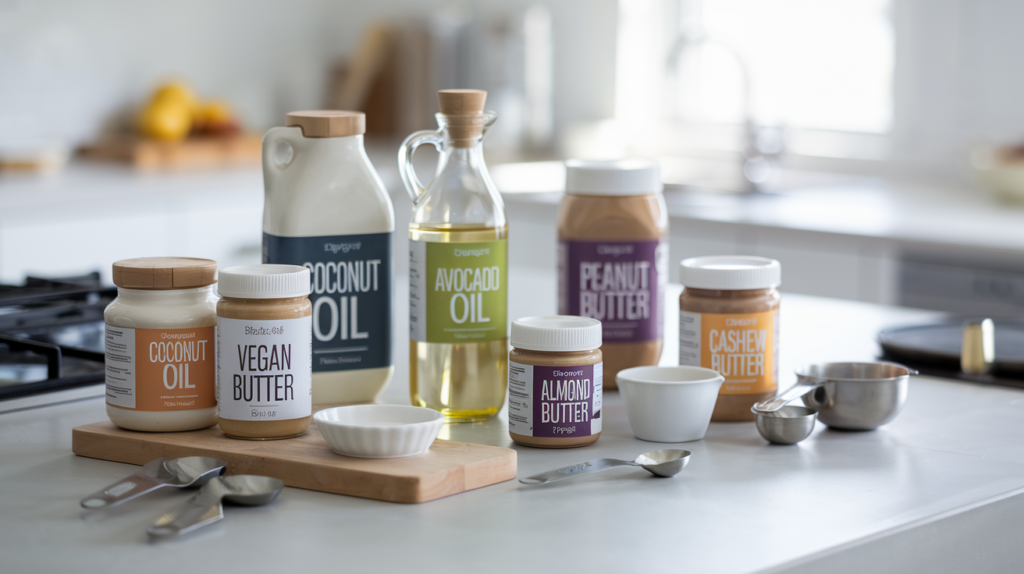
Using Coconut Oil vs. Vegan Butter in Vegan Oatmeal Cookies
The type of fat you choose can significantly influence your vegan oatmeal cookies’ flavor, texture, and richness. Two popular options are coconut oil and vegan butter, each with unique characteristics.
- Coconut Oil: Coconut oil is a favored choice for vegan baking due to its firm texture at room temperature and ability to create a crumbly yet moist cookie. It imparts a subtle coconut flavor, complementing various additions like chocolate chips or nuts. Additionally, coconut oil is high in healthy saturated fats, contributing to the cookies’ overall richness.
- Vegan Butter: Vegan butter offers a more neutral flavor than coconut oil, making it versatile for different cookie profiles. It provides a creamy texture and helps achieve a tender crumb, similar to traditional butter-based cookies. Vegan butter often contains a blend of oils, such as palm, canola, or sunflower oil, which can influence the final taste and texture.
How Fats Influence the Richness of Vegan Oatmeal Cookies
Coconut oil’s saturated fat content makes cookies denser and more prosperous. This richness pairs well with hearty ingredients like oats and nuts, enhancing the overall flavor profile.
Vegan butter, on the other hand, can create a lighter and more delicate texture, making the cookies feel less dense while still maintaining a satisfying richness. The choice between coconut oil and vegan butter ultimately depends on your desired flavor and texture and any dietary preferences you may have.
Alternative Fats for Enhancing Vegan Oatmeal Cookies: Avocado Oil and Nut Butter
Avocado oil and nut butter offer excellent alternatives for diversifying their fat sources.
- Avocado Oil is known for its mild flavor and high smoke point, making it an excellent substitute for baking. It provides a smooth texture without adding any overpowering flavors, making it ideal for cookies where you want the other ingredients to shine.
- Nut Butter: Almond butter, peanut butter, or cashew butter can add fat and protein to your cookies, enhancing their nutritional value. They also contribute their distinct flavors, which can add complexity and depth to your cookies.
Flavor Enhancers for Delicious Vegan Oatmeal Cookies
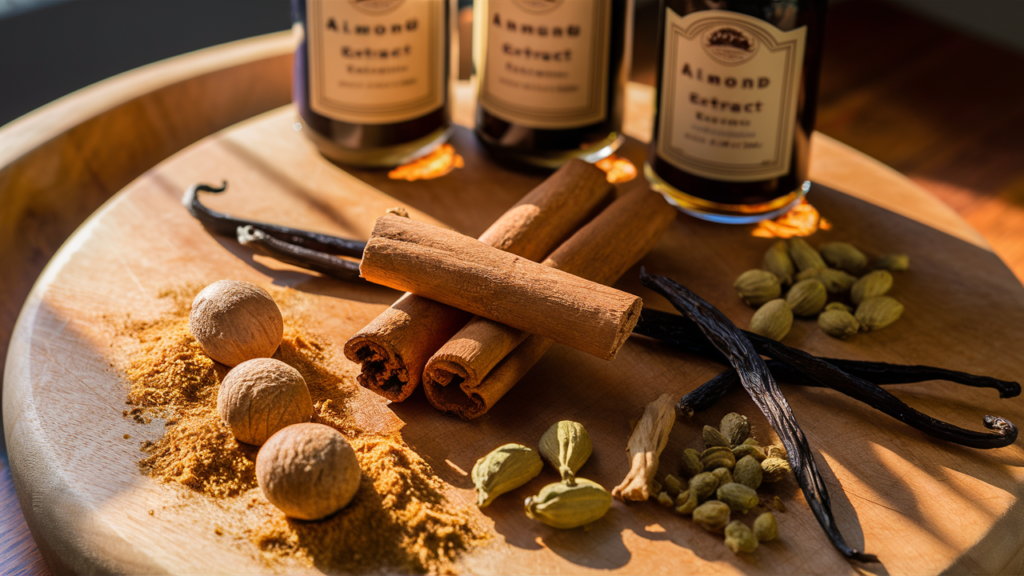
Spices and Extracts to Enhance Vegan Oatmeal Cookies
Enhancing the flavor of your vegan oatmeal cookies with spices and extracts can transform a simple cookie into an extraordinary treat. These additions introduce complexity and warmth, making your cookies irresistible.
- Cinnamon: A classic spice for oatmeal cookies, cinnamon adds warmth and sweetness without any additional calories. It pairs beautifully with apples, raisins, and nuts, creating a comforting flavor profile.
- Nutmeg: A pinch of nutmeg can elevate your cookies by adding a subtle, aromatic depth. It’s especially effective when combined with cinnamon or cloves.
- Ginger: Ground ginger adds a zesty kick and a hint of spiciness, perfect for cookies with dried fruits like cranberries or apricots.
- Cardamom: This exotic spice brings a unique floral and citrusy note, enhancing the overall flavor complexity of your cookies.
- Vanilla Extract: Vanilla is indispensable in baking. It provides a sweet and aromatic base that complements all other flavors. It enhances the overall taste without being overpowering.
- Almond Extract: Almond extract is an excellent addition to a nutty undertone. It pairs well with chocolate and nut-based mix-ins, adding a rich, fragrant note.
The Importance of Vanilla and Cinnamon in Vegan Oatmeal Cookies
Vanilla and cinnamon are the cornerstone flavors in oatmeal cookies, each defining the cookie’s character.
- Vanilla: Often considered the “flavor enhancer” of baking, vanilla extract deepens and harmonizes the flavors of the other ingredients. It provides a sweet, mellow backdrop that allows different flavors to shine.
- Cinnamon: This spice contributes warmth and sweetness, enhancing the inherent flavors of the oats and other components in the formulation. Cinnamon can make the cookies taste more robust and comforting, perfect for any season.
Innovative Flavor Combinations for Vegan Oatmeal Cookies
To take your vegan oatmeal cookies to the next level, consider experimenting with innovative flavor combinations:
- Ginger and Pecan: Ginger’s spiciness complements pecans’ rich, buttery flavor, creating a balanced and flavorful cookie.
- Chocolate and Sea Salt: Dark chocolate chunks paired with a sprinkle of sea salt provide a delightful contrast of sweet and savory.
- Coconut and Lime: Shredded coconut and lime zest add a tropical twist, making the cookies refreshing and unique.
- Pumpkin and Spice: Ideal for the autumn season, pumpkin puree mixed with cinnamon, nutmeg, and cloves enhances moisture and imparts a cozy warmth.
Mix-ins and Toppings for Perfect Vegan Oatmeal Cookies
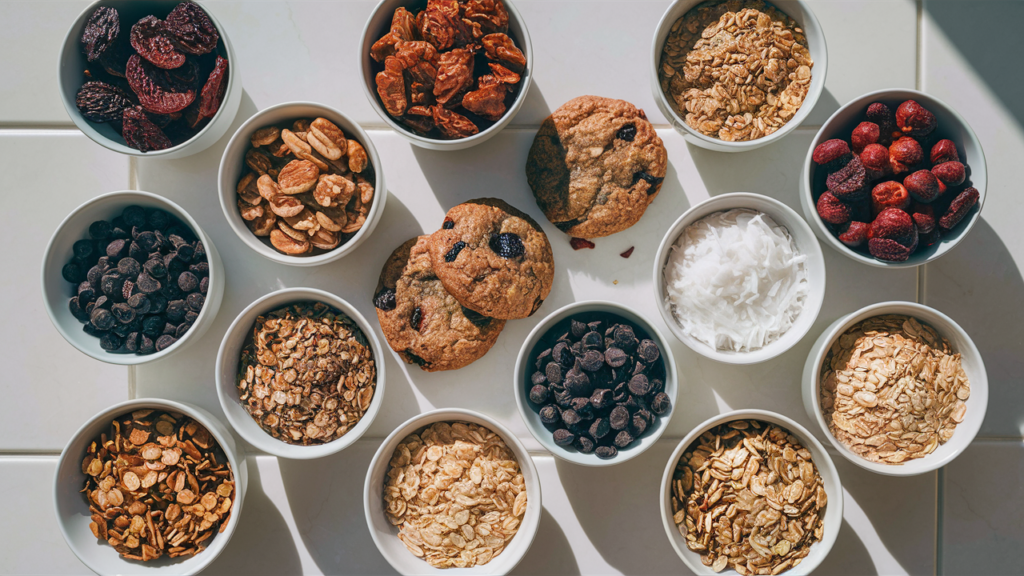
Creative Vegan-Friendly Mix-ins and Toppings for Vegan Oatmeal Cookies
Adding mix-ins and toppings to your oatmeal cookies enhances flavor and texture and allows endless customization. Here are some creative vegan-friendly options to consider:
- Dried Fruits: Raisins, cranberries, apricots, cherries, or dried blueberries add natural sweetness and chewy bursts of flavor.
- Nuts and Seeds: Walnuts, almonds, pecans, sunflower seeds, chia seeds, or pumpkin seeds introduce crunch and a boost of protein and healthy fats.
- Vegan Chocolate Chips: Dark chocolate or vegan chocolate chips provide rich, melty pockets of sweetness that complement the hearty oats.
- Shredded Coconut: Adding a tropical flavor and chewy texture enhances the overall mouthfeel of the cookies.
- Toasted Oats: Lightly toasting the oats before adding them to the dough can bring out their nutty flavor and crunchy texture.
Nutritional Boosts for Vegan Oatmeal Cookies: Nuts, Seeds, and Fruits
Incorporating nuts, seeds, and fruits makes your cookies more delicious and increases their nutritional value.
- Nuts: High in protein, fiber, and beneficial fats. Nuts make your cookies more filling and nutritious. They also add a satisfying crunch that contrasts beautifully with the soft oats.
- Seeds: Seeds like chia, flax, or hemp add omega-3 fatty acids, antioxidants, and additional fiber, promoting better digestion and overall health.
- Fruits: Dried fruits contribute natural sweetness and vitamins. They also add a chewy texture that enhances the cookie’s complexity.
Decorating Toppings to Enhance the Presentation of Vegan Oatmeal Cookies
Adding toppings enhances the visual appeal of your cookies, making them more attractive and perfect for Instagram.
- Sprinkles: Use vegan-friendly sprinkles to add color and fun to your cookies.
- Drizzles: A drizzle of melted dark chocolate or a simple glaze can add elegance and extra flavor.
- Nuts and Seeds: Press whole nuts or seeds on the cookies before baking to create a visually appealing pattern and additional texture.
- Sea Salt Flakes: A dash of sea salt sprinkled on top can amplify the sweetness and introduce an elegant flair.
Baking Tips for Perfect Vegan Oatmeal Cookies

Oven Temperature and Time
Baking oatmeal cookies to perfection requires precise control over oven temperature and baking time. Here are some tips to ensure your cookies turn out just right:
- Preheat Your Oven: Ensure your oven is heated to the appropriate temperature before baking the cookies. This ensures even baking and prevents undercooked centers or overly crispy edges.
- Ideal Temperature: Most oatmeal cookie recipes call for baking at 350°F (175°C). However, depending on the desired texture, some recipes may require slightly higher or lower temperatures.
- Baking Time: Vegan oatmeal cookies generally bake for 10-15 minutes. Monitor them closely, as overbaking may cause the cookies to become dry and hard. In contrast, underbaking can result in a too-soft texture. Look for lightly golden edges and a set center.
- Rotate Your Baking Sheet: For consistent baking results, turn your baking sheet midway through the baking duration. This prevents one side from becoming excessively dark or overdone.
Cookie Thickness and Spacing
The thickness and spacing of your cookies play a crucial role in their final texture and appearance.
- Thickness: To achieve chewy cookies, it is recommended to slightly underbake them and subsequently allow them to cool on the baking sheet. Thinner cookies are crispier, while thicker ones remain soft and chewy.
- Spacing: Place your cookies approximately 2 inches apart on the baking sheet to accommodate spreading. Overcrowding can lead to uneven baking and merging of cookies. At the same time, adequate spacing ensures they maintain their shape and bake evenly.
Preparing the Dough Ahead and Storage Tips
Preparing your cookie dough in advance can save time and enhance the flavors.
- Chilling the Dough: Chilling the dough for a minimum of 30 minutes prior to baking helps the cookies retain their shape and reduces excessive spreading. Additionally, it allows the flavors to blend, resulting in a more delicious cookie.
- Freezing the Dough: You can freeze cookie dough portions on a baking sheet and transfer them to a freezer-safe bag. This allows you to bake fresh cookies without preparing the dough from scratch whenever the craving strikes.
- Storage: Store baked cookies in an airtight container at room temperature for up to one week. For more extended storage, freeze them in a sealed container or freezer bag and thaw them at room temperature when ready to enjoy.
Avoiding Common Baking Errors
Even experienced bakers can encounter issues when baking cookies. Here are some common mistakes and how to avoid them:
- Overmixing the Dough: Overmixing can develop the gluten in the flour, resulting in tough cookies. Stir the ingredients only until they are just blended to achieve a tender texture.
- Incorrect Measuring of Ingredients: Accurate measurement is crucial in baking. Use proper measuring cups, spoons, and the right ingredients level to ensure the right balance of flavors and textures.
- Not Allowing the Dough to Chill: Skipping the chilling step can cause cookies to spread too much, leading to thin and crispy cookies instead of thick and chewy ones.
- Using the Wrong Type of Sugar: Different sugars can affect the texture of your cookies. Brown sugar adds moisture and chewiness, while white sugar contributes to crispiness. Adjust the sugar types based on your desired outcome.
Conclusion
Crafting delicious vegan oatmeal cookies is both an art and a science. Striking the perfect balance between flavor and texture involves carefully selecting the right ingredients and utilizing precise baking techniques. By paying attention to the choice of oats, selecting the best vegan substitutes, thoughtfully choosing your fats, enhancing flavors with spices and extracts, incorporating creative mix-ins and toppings, and following essential baking tips, you can create cookies that are not only tasty but also nutritious and satisfying.
Recap of Main Tips
- Choose the Right Oats: Opt for old-fashioned rolled oats for a chewy texture, or explore alternatives like gluten-free and steel-cut oats for unique textures.
- Use Effective Vegan Substitutes: Replace eggs with flax eggs, banana, aquafaba, or vegan yogurt, and sweeten naturally with maple syrup, agave nectar, or coconut sugar.
- Select the Perfect Fat: Decide between coconut and vegan butter based on your desired richness and texture, or experiment with avocado and nut butter for variety.
- Enhance with Flavors: Incorporate spices like cinnamon and nutmeg, and use vanilla or almond extract to deepen the flavor profile.
- Add Creative Mix-ins and Toppings: Boost nutrition and flavor with nuts, seeds, dried fruits, and vegan chocolate chips, and decorate with sprinkles or sea salt flakes.
- Master Baking Techniques: Control oven temperature and baking time, ensure proper cookie thickness and spacing, and avoid common baking errors for perfect results.
Encouragement to Experiment
Don’t be afraid to get creative in the kitchen! Vegan oatmeal cookies offer endless possibilities for customization, allowing you to tailor each batch to your taste preferences and nutritional needs. Try different combinations of spices, mix-ins, and sweeteners to discover your favorite variations. Share your distinctive recipes with friends and family, and encourage others to experience the delight of vegan baking.
Explore More Vegan Recipes
If you enjoyed this guide to vegan oatmeal cookies, explore our other vegan recipes for more delicious and healthy treats. Whether indulging in cookies and cakes or exploring savory dishes and snacks, there’s a delightful option for everyone to savor. Happy baking!
By integrating these secrets into your baking routine, you’ll be well on your way to creating mouthwatering vegan oatmeal cookies that delight your taste and conscience. Whether you’re baking for a special event or just treating yourself to a sweet delight, these tips will enable you to create bakery-quality cookies right in your own kitchen.
- For a hearty vegan meal, try our 10-Minute Butter Beans Recipe – Hearty Vegan Comfort Delight.
- If you’re looking for a quick and creamy addition to your breakfast, don’t miss the Delightfully Quick Creamy Avocado Spread in 10 Minutes.
- Need a delicious protein boost? Check out our Grilled Tofu Recipe – The Best Vegan Protein Boost.
- For a savory and easy pasta dish, you can’t go wrong with the Delicious Roasted Tomato Pasta – Easy Hearty Vegan Meal in 30 Minutes.

